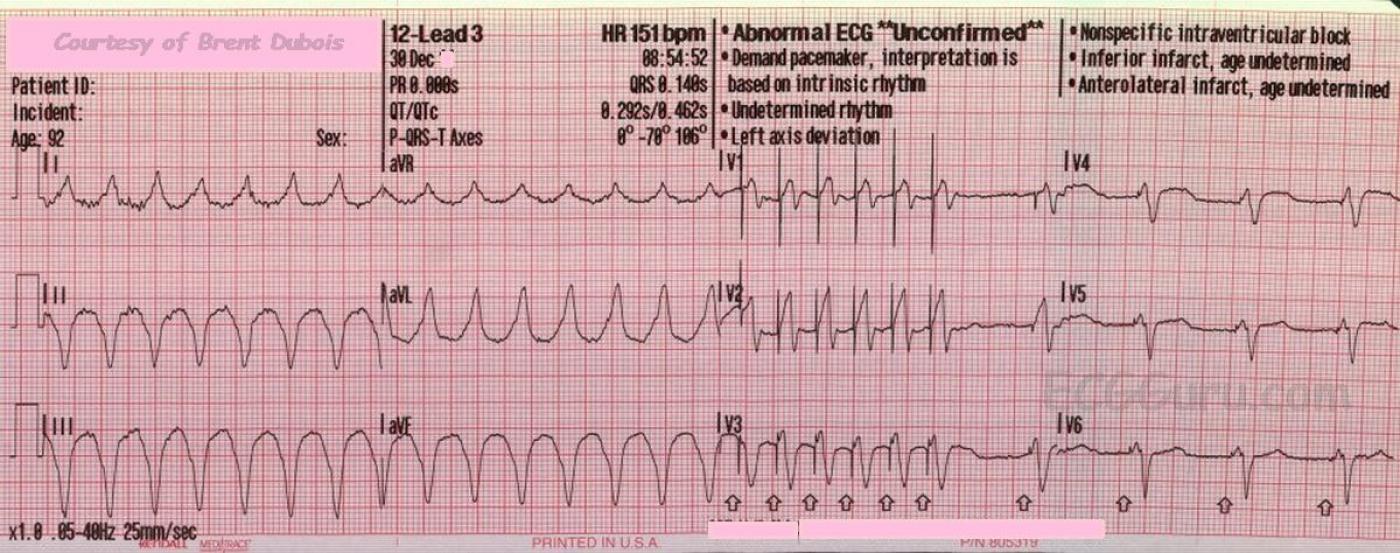This ECG was donated to the ECG Guru by Brent Dubois, and was originally published on the FaceBook page, Paramedic Tips & Tricks. We published it to this site three years ago, but believe it should be shown again, as it is somewhat rare to catch a good-quality 12-Lead ECG of an implanted cardioverter-defibrillator pacemaer using overdrive pacing to terminate a ventricular tachycardia. Most of our examples have been rhythm strips.
In this strip, we see the patient in ventricular tachycardia (V tach) at a rate of about 190 / minute. The ICD, in response to the fast rate, delivers a short burst of even faster paced beats. The physological rule in the heart is, "the fastest pacemaker controls the heart". Once the pacemaker has terminated the V tach, it paces at a much slower rate. It is pacing the atria, and the conduction system is intact, allowing the impulse to travel normally through the ventricles. If the sinus node is able to "outpace" the slower paced rhythm, the heart will resume a sinus rhythm.
This is called "overdrive pacing" and is done automatically by an ICD that is programmed to do so. Overdrive pacing can also be accomplished by a temporary transvenous pacer or transcutaneous pacemaker.
All our content is FREE & COPYRIGHT FREE for non-commercial use
Please be courteous and leave any watermark or author attribution on content you reproduce.



Comments
Use of an Anti-Tachycardia ICD device to Convert VT
NIce description by Dawn of AntiTachycardia Pacing to convert VT in this patient with an ICD. Since Dawn described functioning of the Anti-Tachycardia device — I'll just comment briefly on the rhythm before the device was activated.
For those wanting review of the criteria to distinguish between SVT vs VT - Please check out my ECG Blog #42 -
Ken Grauer, MD www.kg-ekgpress.com [email protected]